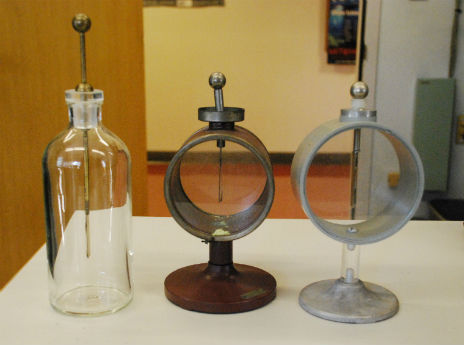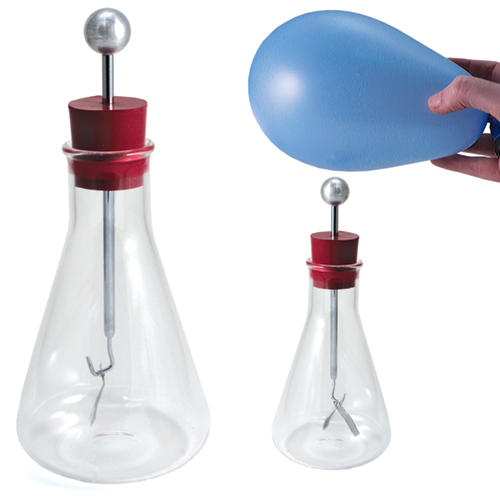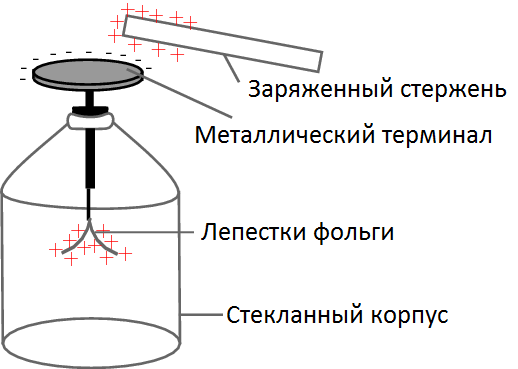The device and principle of operation of the electroscope
Electroscope — the simplest demonstration device designed to show the presence of electric charge in charged (electrified) objects interacting with it.
The principle of operation of this device is based on the basic rule of electrostatics — bodies of the same name repel each other. The simplest electroscope can always be found in a well-equipped physics office of any modern school. After all, an elementary model of a two-blade electroscope is easy to make yourself using improvised means.

The electroscope of the most primitive design consists of a vertically fixed metal electrode-rod, at the lower end of which are suspended two petals of paper or thin metal foil, which are free to deviate in opposite directions from each other. by electrostatic forces.
In order to ensure a rest for the petals and to protect them from accidental flows of air, wind, etc., the rod electrode together with the petals are fixed inside a box with transparent glass on the side of the observer or simply inside a glass bulb. The top of the rod electrode is brought out of the bulb so that charged objects can touch it.
It is good if a terminal in the form of a disk or ball is attached to the protruding rod for easy contact with objects. It is best to evacuate the air from the vessel so that the petal charge is retained as long as possible throughout the demonstration.

Direct contact fee
At the moment of touching the terminal of the rod of the electroscope with a charged object, say rubbed on wool with an ebony stick, the electric charge flows along the rod on the calmly hanging petals, as a result of which the petals are charged with the same name and with the same sign as the brought object, regardless of the charge of which sign this object was charged.
The charged petals immediately repel each other under the influence of Coulomb forces and diverge in different directions. The electroscope shows — the charge on the object was and was partially derived from the petals… If after touching the object is removed, the petals will remain in a diluted state.
Charge by influence

Even if you just bring a sufficiently well-charged object (meaning you don't touch it at all, just bring it closer) to the electroscope rod, the petals will still scatter. Is called charge by influence.
Suppose the brought object is positively charged, then when it is brought to the terminal of the electroscope, a negative charge will come to the terminal from the petals along the rod in an attempt to be attracted by the positive charge of the brought object. But as this negative charge left the petals, therefore, the petals themselves became positively charged and immediately dispersed.
But as soon as the raised object is removed, the petals will descend again, as the charge will again be distributed over the rod and petals uniformly, as in a discharged electroscope before the approach of a charged object.
And through the influence you can charge the electroscope so that even with the distance of the charging object, the petals remain charged. To do this, you can connect a ground wire to the terminal of the electroscope, and when a charged object is lifted, remove the ground. The petals will be scattered by the excess charge coming from the ground, and the balance will not return, even when the charging element is removed.
Unloading
If the rod of an already charged electroscope is touched with an oppositely charged body, then the petals, initially separated in different directions, will begin to approach each other. In this way, the electroscope allows you to determine the relative sign of the charge of the body under study.
Application of electrostatics:
